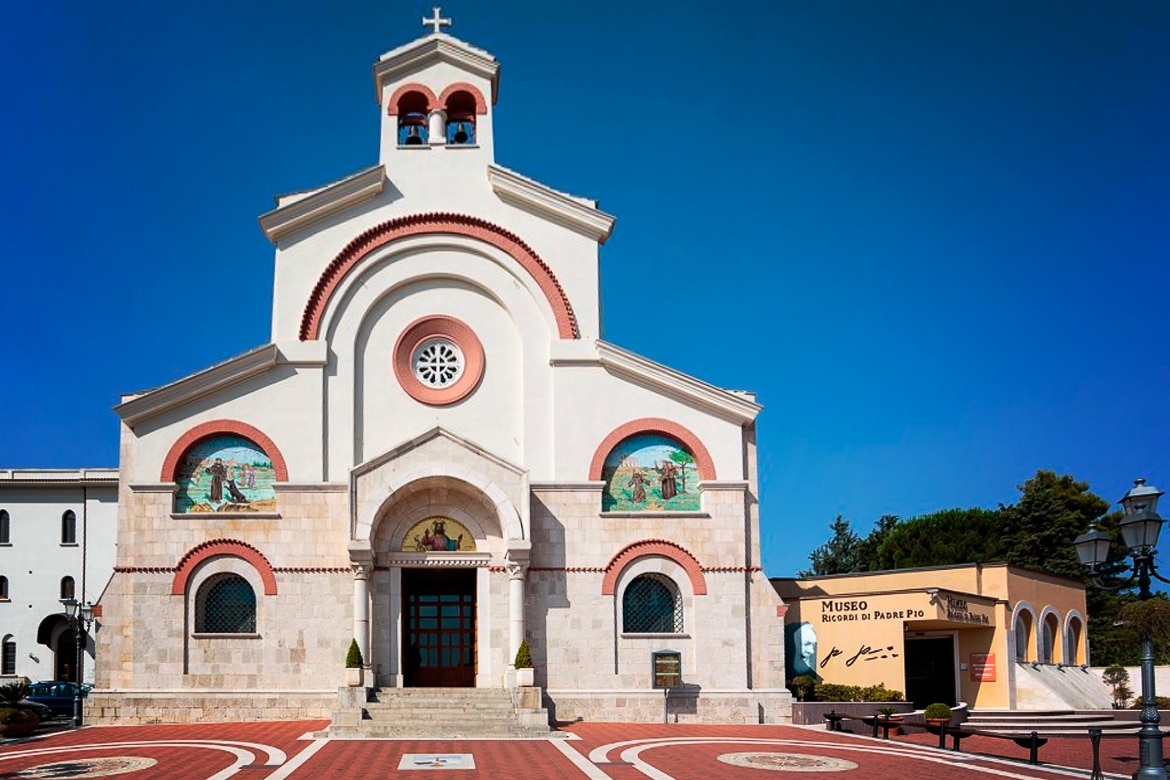The Church of the Holy Family (Chiesa della Sacra Famiglia) in Pietrelcina, inspired by Padre Pio, houses a relic of the saint and is located beside the Capuchin Friars’ Convent and a museum dedicated to his life. Its creation fulfilled a prophecy by Padre Pio, who as a young boy heard angelic choirs at the site destined to become a center of devotion.
The Church of the Holy Family (Chiesa della Sacra Famiglia) in Pietrelcina
Standing at the gateway to Pietrelcina, the Church of the Holy Family (Chiesa della Sacra Famiglia) was built at the express request of Padre Pio. Construction began in 1926 and took 25 years to complete, culminating in 1951. The Romanesque-inspired façade greets visitors with a blend of simplicity and grandeur. Inside, a polychrome marble altar and a mosaic depicting the Holy Family create a serene atmosphere for prayer and reflection.

The Relic and the Convent
A side chapel houses a unique relic: the only fragment of Padre Pio’s body kept outside San Giovanni Rotondo. Next to the church is the Capuchin Friars’ Convent and a museum that preserves objects and relics associated with the saint. Among the most notable items is the robe of his flagellation, a vivid testament to his mystical sufferings.
A Prophecy Fulfilled
The story of the Church of the Holy Family is intertwined with a striking prophecy from Padre Pio’s youth. It is said that, as a boy, he heard angelic choirs and the sound of bells ringing out of nowhere at the location where the church and convent would later be built. These visions foreshadowed the site’s sacred destiny as a hub of devotion and spirituality.
Mary Pyle’s Role
Construction of the church and convent began while Padre Pio had already been living in San Giovanni Rotondo for a decade. Citizens of Pietrelcina, eager to establish a sacred space for the Capuchin friars, sought help from Mary Pyle, an American benefactor. Deeply moved, she sought Padre Pio’s permission: “Father, may I build a convent in Pietrelcina?”
His reply was immediate and firm: “Yes, do it quickly, and dedicate it to the Holy Family.”
The Miraculous Water Source
During construction, workers faced a critical challenge: a shortage of water essential for the project. They traveled to San Giovanni Rotondo to seek Padre Pio’s guidance. After reviewing their plans, he pointed to a specific spot and instructed:
“Dig five meters here, and you will find all the water you need.” Following his advice, the workers unearthed an abundant water source, not only sufficient for completing the church but also becoming a valuable resource for the entire Pietrelcina community.






